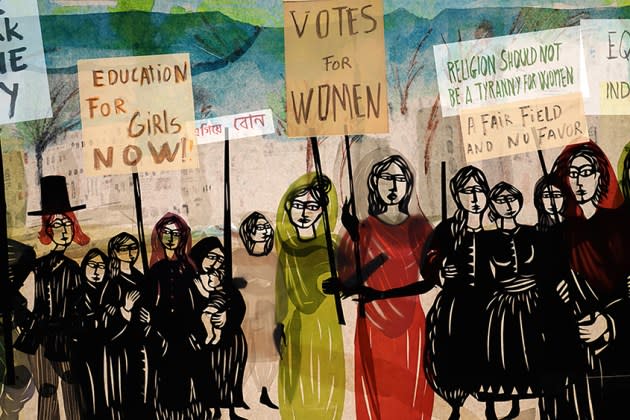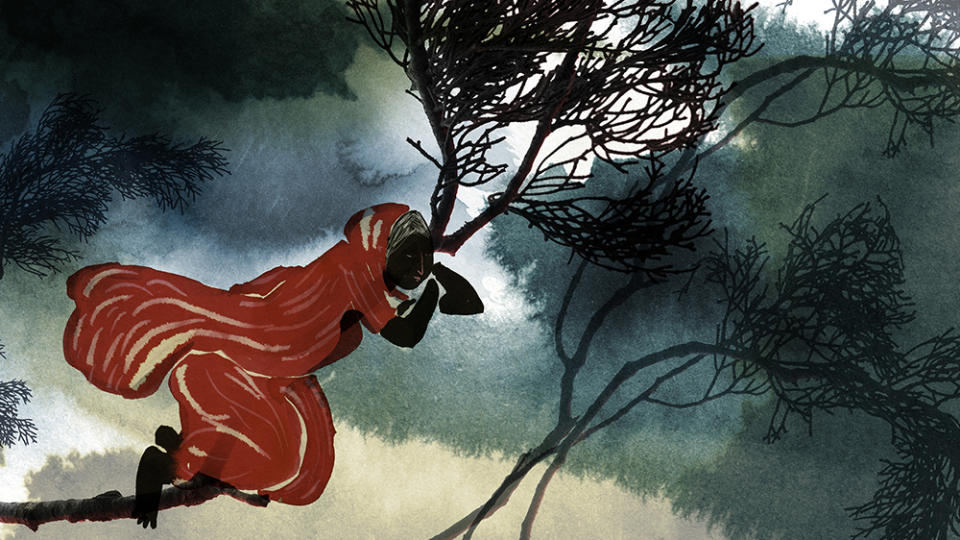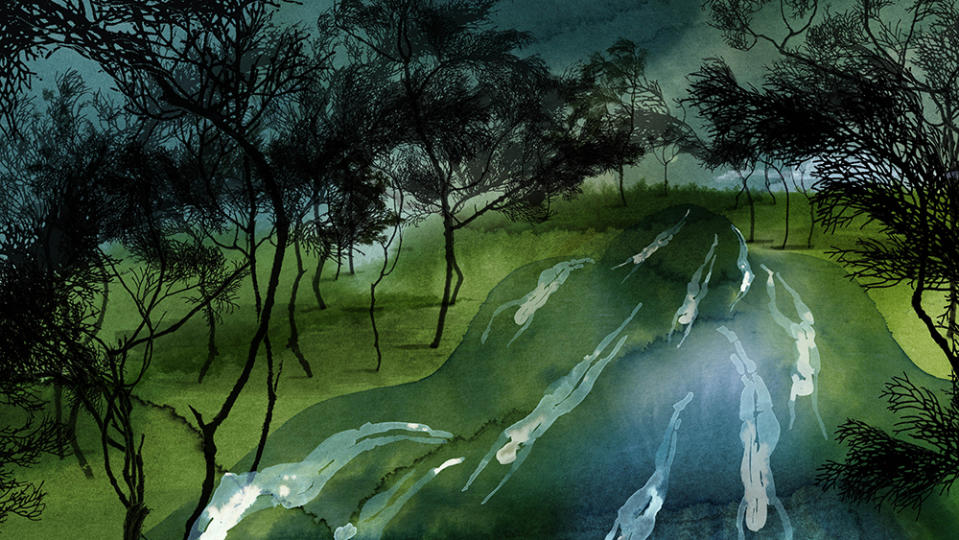Isabel Herguera’s Awaited ‘Sultana’s Dream’ Gets First Trailer as San Sebastian Competition Beckons (EXCLUSIVE)

A San Sebastian competition contender, Isabel Herguera’s awaited debut feature film, animated feature “Sultana’s Dream,” (“El sueño de la sultana”), has a first trailer, which Variety can share exclusively.
Seen at Annecy as a work in progress, the feminist film will world premiere at Spain’s 71st San Sebastian, becoming the first animation feature directed by a woman to garner selection.
More from Variety
Producers of “Unicorn Wars” Abano Producións and UniKo, join El Gatoverde Producciones, Sultana Films and Fabian & Fred, to bring this three-part animated feature, recounting the modern-day vicissitudes of a Spanish artist in India; the travails of real-life feminist thinker Rokeya Hossain; and the story she published remarkably as early as 1905 about Ladyland, where women hold the dominant power.
The trailer showcases the immense artistry between the three parts. Visually distinct it shows Ines, the main protagonist, in 2D ink and watercolour. We then see shadow puppets which mark Rokeya’s life within the narrative. Finally, traditional Mehndi technique, usually associated with temporary skin decoration, was used to create Ladyland, a place where women rule and men are locked away. Professor Mary Beard, the British classicist, makes a cameo speaking of the first recorded example of a “man telling a woman to shut up.”
The gestation of the project goes back over a decade starting with a 2012 crowdfunding effort. The filmmaker successfully garnered enough support to host a series of workshops centred around Rokeya Hossain’s revered book “Sultana’s Dream” in India. This led to a screenwriting grant provided by the Basque government, enabling the creation of an initial screenplay for the animated feature. Drawing inspiration from Rokeya Hossain’s seminal utopian narrative, the film melds the filmmaker’s personal experiences with the tale. Mirroring the film’s central character, Inés, the filmmaker embarked on a journey across India, tracing the legacies of Rokeya Hossain and the mythical Ladyland. This journey, driven by a deep connection to Rokeya and her matriarchal utopia, forms the emotional backbone of the film. As the film progresses, underlying themes, especially that of security – a pivotal concept around which Hossain crafted Ladyland – become increasingly prominent and universal. This over decade-long project, more than just a creative venture, shaped the filmmaker’s feminist consciousness. Her hope is for the film to“convey the urgency of making the space we share an equal and safe place for women.”
Distribution in Spain will be managed by Filmin, with it going on release nationally on Nov. 17.
Its selection at San Sebastian is highly appropriate for a film whose director was born in the city. Variety caught up with the filmmaker:
How was the transition from directing a short to a feature which uses many animation techniques?
That was the hardest part, to somehow figure out systems or a methodology in which you can share the process. It was essential to trust other people and believe in other people’s talents. On smaller projects everything is under control, which is the way I’ve been used to from short films. Some people said the transition is not too great going from a short to a feature but that wasn’t true, it felt like multiplying complexity by 10! A big challenge figuring out a pipeline, because we used three different techniques with each technique requiring its own approach. It was a challenge. We started doing first the backgrounds so to define the atmosphere of the scene before we finally defined the acting of the characters. That helped us. That way we could strengthen the painterly approach and reduce animation production which is always the most expensive and time consuming part of the production.

There is a unique light and ambience to each part of the film. Did your time spent in the actual places, with the sketchbooks that seem important to you, aid these qualities?
Yes, that regular practice involves visiting places, sketching, and capturing the essence instinctively. Until sketching becomes almost as instinctive as handwriting, little by little you can feel the atmosphere of a place and gain confidence in the way you represent the surroundings. With the right stroke, one can express as much or even more than delving into intricate details. This experience gave me the confidence to adopt a painterly approach, where you begin with broad strokes and gradually refine them. However, like while working on a painting…it’s essential to know when to stop.
You collaborated extensively with a women’s cooperative in India starting in 2013. How much of that work influenced the final piece?
I conducted the first workshop with SEWA (Self Employed Women’s Association) in India around 2012. That was around the time I came across the book. Subsequently, we organised various workshops, with the most recent one in 2019, just before the pandemic. That year, I last visited India, holding a workshop in Kolkata, Bengal. Later, a great Indian artist Rajiv Eipe held a workshop in Bangalore and finally our Indian team in Mumbai ( Blackbird Design) held another workshop in Mumbai. It’s worth noting that all the elements were hand-drawn by Mehndi artists, while Blackbird Design animated and composed the final image.
What aspects of the original book “Sultana’s Dream” by Rokeya Hossain do you find most relevant to today’s audience?
When I first read the book, I organised workshops with young girls and women, primarily in India. Some of these women spoke English, while others spoke languages I wasn’t familiar with. However, one constant, whether in Spain or India, was the concern for safety. It made me reflect on how much Rokeya had contemplated creating a world where women could feel secure. Whether you attribute this to religious or moral reasons, the underlying desire remains the same: a yearning for safety. In these workshops, when I asked women what they would do if they were men, the common response was, “I’d like to go out after sunset and feel safe.” This sentiment was universal. Interestingly, young girls, around ages of three-to-seven, were far more uninhibited. They freely expressed their imaginations and felt comfortable discussing concepts like men being pregnant. But as they grew older and became more aware of societal expectations of women, they often became more reserved, perhaps even constrained by conventions.

Best of Variety
Ouija Board Welcome Mat, Snake Goblets and Skeleton Singers: The Best Halloween Decorations of 2023
45 Pop Culture Halloween Costumes for 2023: From Barbie to Ahsoka
Oscars Predictions: Documentary Feature – Will the Fourth Time be the Charm for Wim Wenders?
Sign up for Variety’s Newsletter. For the latest news, follow us on Facebook, Twitter, and Instagram.

 Yahoo News
Yahoo News 
